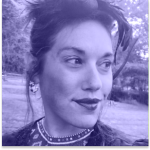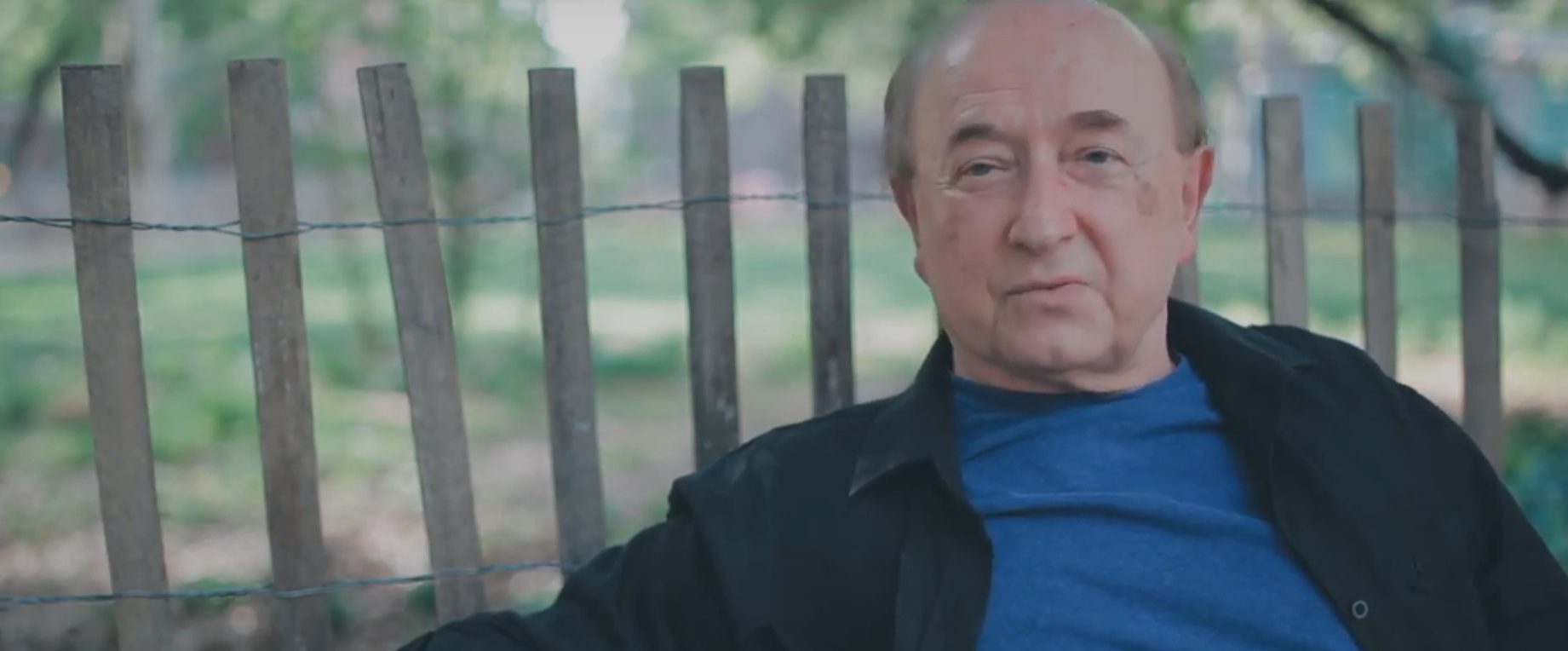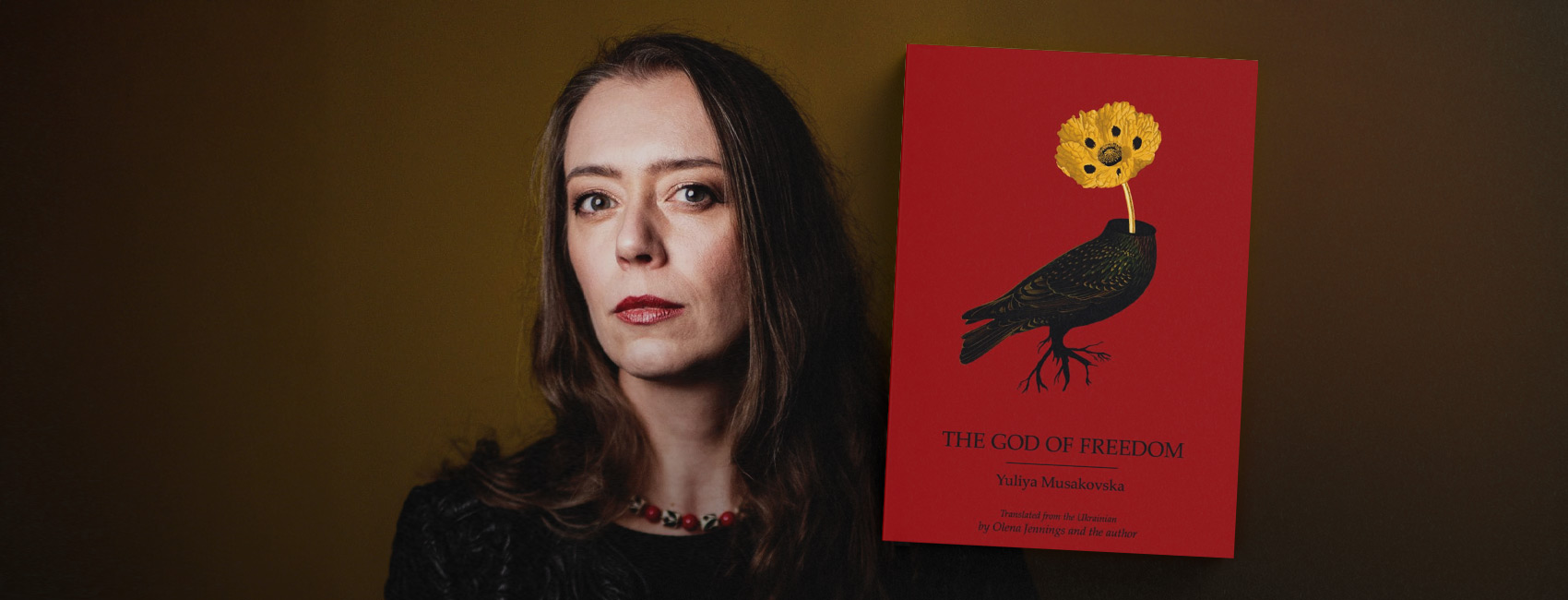* ESC - close the search window
Nina Murray
Covering and uncovering then and now: A review of Nina Murray’s ‘Gannota: A Tale of Three Thimbles’
20.05.2024
Ukrainian-American poet and translator Nina Murray long ago established herself as a formidable and compelling figure in the world of Ukrainian literary translation. Her notable translations include works like Serhiy Zhadan’s “A Harvest Truce” (forthcoming in 2024 by Harvard Ukrainian Research Institute) and Stanislav Aseyev’s “The Torture Camp on Paradise Street” (co-translated with Zenia Tompkins, published by Harvard Ukrainian Research Institute). Other major accomplishments include her translation of Lesia Ukrainka’s “Cassandra” (forthcoming by Harvard Ukrainian Research Institute) and the publication of “Gannota: A Tale of Three Thimbles,” a collection of Murray’s poems published by The Braag, a publication and performance company in Northeast England.
“Gannota: A Tale of Three Thimbles” is a collection in its own right. Inspired by the life and myth of one of Ukraine’s foremost feminists and writers — Larysa Kosach, also known as Lesya Ukrainka — “Gannota” reads like a haunting fairytale and is rooted in generational stories, trauma, myths, and lore that have shaped individuals, families, and homelands.
At “Gannota’s” beginning, there is a brief note by the author to help readers understand the collection’s style and structure. The author notes that the first thing she experienced during the translation of Ukrainka’s play “Cassandra,” was “being possessed by Lesya’s voice and imagination.” She then describes Gannota as “both a meditation on an iconized poet’s life” and a “way to inhabit that feeling of being spoken through.” Author Nina Murray describes “being spoken through” during the writing process — further solidifying its ethereal, haunting tone. The structure of “Gannota” reinforces this tone: Readers discover long and short poems intermingling with one another, placed carefully to gently ebb and flow, gripping readers and leading them from poem to poem, page to page.
One of Murray’s otherworldly untitled gems begins with the line “fog like oatmeal.” A sense of magic and the supernatural develops in the poem’s five concise lines. Each “piece of a puzzle” becomes its own entity and “spins four ways.” Playing on the concept of four ways is the poem’s final line — “the days are quantum” — written using only four ways. The speaker’s observation that “the days are quantum” creates a sense of timelessness. This sense of timelessness permeates the following story about Harpyna, a woman often perceived as a “heathen witch.” This story progresses like a brief fairytale being told at bedtime. In it, the speaker recounts the “gone” generations — those “first in the line of women to have carried the name Gannota.” The story’s structure waxes and wanes between short and long paragraphs, which add to the story’s dreamlike tone. Much like Ukrainka’s own plays, nature abounds in the story. Part of its magic develops because the speaker personifies nature: the mountains bear skin that sweats “under the snow.” Harpyna’s character seems to possess divination powers completely attuned to nature:
“Harpyna could look into that water and tell where the pastures would be richest that year. She need only to place her hand on a newborn horse’s withers to tell how many times his dam had fought off the wolves and how fast it would grow to be.”
It is from Harpyna that the mythical thimbles come into existence when Harpyna bequeaths them to her only daughter, Oksana. However, the thimbles are not the only inheritance Oksana receives. “What she told Oksana was meant for her alone and is not yours to know.” Thus, one can infer that generational silence is another inheritance Oksana receives.

The concept of generational silence, and its role in generational trauma, is inherent in Murray’s collection. One of the poems in which it is most evident is the poem “evensong #archival.” The poem opens with a commanding warning:
Ours is a meagre magic:
done stitch by stitch,
to be touched
only a few times a year.
The natural world blends with the human world and magic becomes a powerful influence as the poem continues. Readers watch as “mules and oxen will speak / in tongues that make sense.” Images like “the twisted worm-holes / of our human ears” remind us of our futility and mortality. Meanwhile, nature overrides human understanding as the “ballads the herons sing / the sagas the goats chant” remain above human comprehension. The quiet, subdued images bolster the concept of silence, yet the poem’s final line delivers the ultimate message about the heaviness of silence: “Listen: mice congregate.”
Other poems like “a glossa for Wallace Stevens,” despite its perceived historical setting, resonate with images from current Ukrainian events regarding the full-scale Russian invasion. The speaker observes troops on the move. A militaristic tone develops, fueled by carefully constructed phrases like “cloak of camouflage” — the repetition of the hard /c/ sounds mimicking a machine gun’s quick-fire. Other militaristic descriptions, like “squadroned intuition,” allude to war’s all-encompassing, collective nature. Tempering this language, however, is the personification of nature, which in many ways is harsher than the military language on which the speaker relies. Sand becomes an entity that “sloughs its heavy pebbled skin,” and stones “bulge like skulls” as they “chew up” the soldiers’ “spades in gears of unmaking.” Nature becomes a force that unwinds humanity’s harm and brutality, and the forest becomes a place of refuge into which “dear old ghosts receded.”
Adding to the collection’s mysticism is the fact that many of the poems carry the same title. For example, several poems bear the title “#Larysanow,” while others are titled “#thevoice.” Near the end of the collection, readers discover the “#Larsyathen” poems. The collection’s then-and-now fluctuation fuses the present and the past, reminding readers that the two exist not so distantly from one another.
The first “#Larysathen” poem is structured like a fairytale. It alludes to Cassandra, the daughter of King Priam of Troy, and the focal point of Ukrainka’s famous play. The speaker addresses Cassandra directly, stating they “want to believe you survived,” hoping “no one asked you any questions.” The expectation of generational and cultural silence reemerges as the speaker hopes Cassandra will “have no need to speak anything at all.” The second installation in the “#Larsyathen” series seems more hopeful. The narrator’s rejuvenation and healing develop through a return to nature as the “shimmer of meadowlark” and “the whisper of dry rush along the road” lead to “the trail to where I haven’t been.” The narrator’s choice to return to nature echoes the choice made by Harpyna in one of the collection’s initial stories. Thus, the collection is intentionally shaped by generational cycles that lead individuals to make similar choices, reiterating how the past continually influences the present.
“Gannota” has another element working in its favor — its brevity. The collection consists of 23 pages of riveting psychological and even emotional compression. This is due in part to the way longer and shorter poems wax and wane, thematically intertwine, and twist nature and humanity together. The collection becomes one that readers cannot read just once. They will return to it again and again to re-examine what these verses offer about nature, generational influence, and choice.
RELATED: The Ukraine: country lost in translation
Copy editing: Aalap Trivedi (Drafted Editorial Services), Terra Friedman King
This publication is sponsored by the Chytomo’s Patreon community





